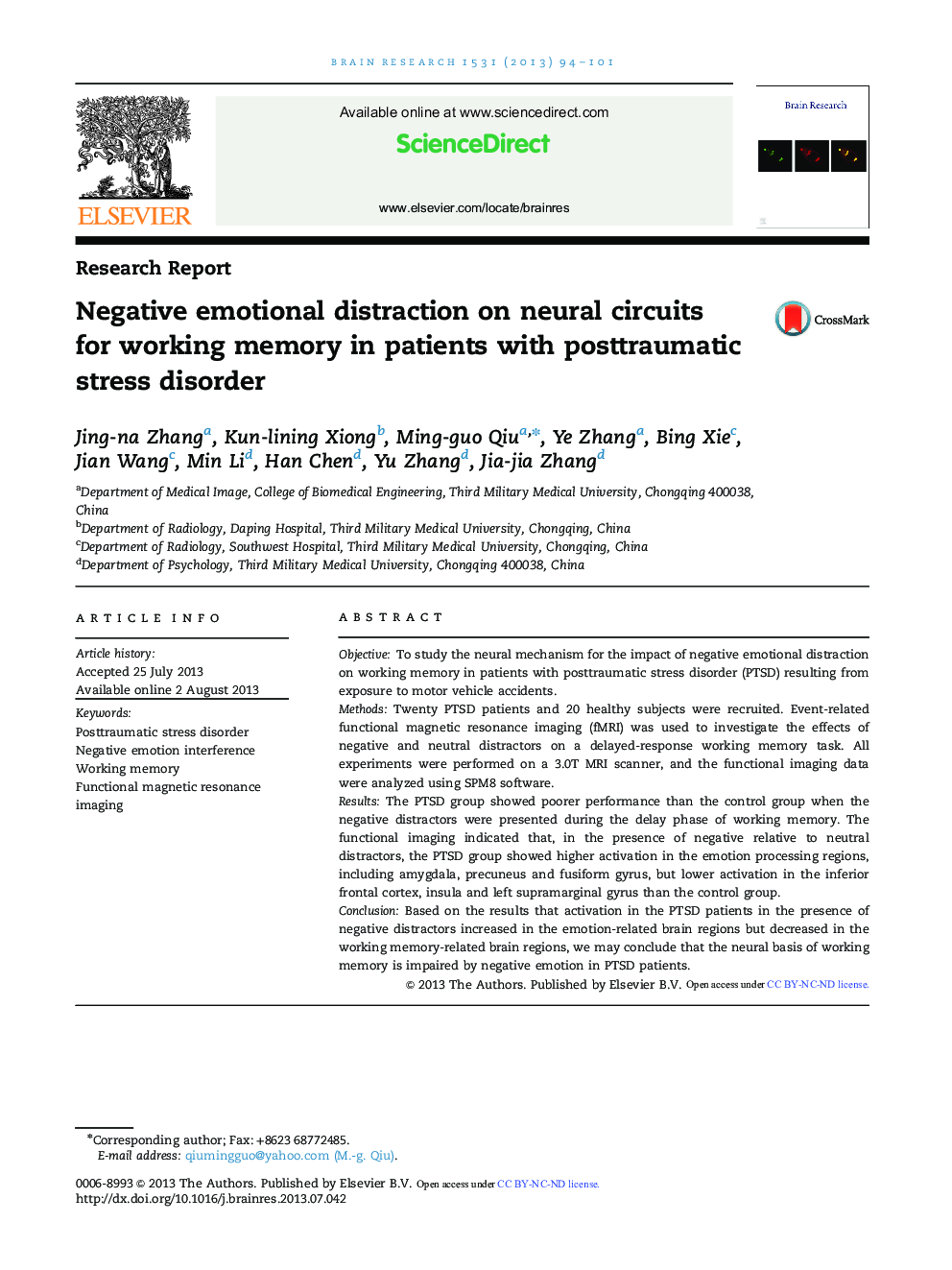| Article ID | Journal | Published Year | Pages | File Type |
|---|---|---|---|---|
| 6263715 | Brain Research | 2013 | 8 Pages |
â¢PTSD patients showed poorer performance to negative distractors during working memory.â¢PTSD patients showed greater activation to negative distractors in amygdala, precuneus and fusiform gyrus.â¢PTSD patients showed decreased activation to negative distractors in the inferior frontal cortex, insula and left supramarginal gyrus.
ObjectiveTo study the neural mechanism for the impact of negative emotional distraction on working memory in patients with posttraumatic stress disorder (PTSD) resulting from exposure to motor vehicle accidents.MethodsTwenty PTSD patients and 20 healthy subjects were recruited. Event-related functional magnetic resonance imaging (fMRI) was used to investigate the effects of negative and neutral distractors on a delayed-response working memory task. All experiments were performed on a 3.0T MRI scanner, and the functional imaging data were analyzed using SPM8 software.ResultsThe PTSD group showed poorer performance than the control group when the negative distractors were presented during the delay phase of working memory. The functional imaging indicated that, in the presence of negative relative to neutral distractors, the PTSD group showed higher activation in the emotion processing regions, including amygdala, precuneus and fusiform gyrus, but lower activation in the inferior frontal cortex, insula and left supramarginal gyrus than the control group.ConclusionBased on the results that activation in the PTSD patients in the presence of negative distractors increased in the emotion-related brain regions but decreased in the working memory-related brain regions, we may conclude that the neural basis of working memory is impaired by negative emotion in PTSD patients.
